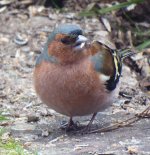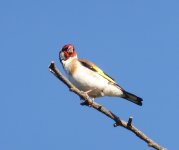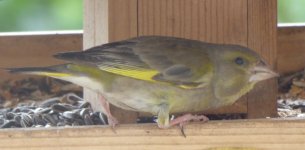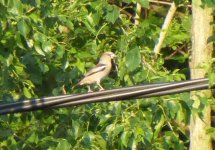And should anyone be interested in more in-depth information on the Haardtrand and its birds, here's a little reading list in chronological order:
Rosl Rößner, Hans-Wolfgang Helb, Annalena Schotthöfer & Oliver Röller,
Vögel in Rheinland-Pfalz - beobachten und erkennen (Neustadt an der Weinstraße 2013).
-> This 341 page compendium lists the 150 most common birds (based on numbers from the highly recommended citizen science project
https://artenfinder.rlp.de/) in Rhineland-Palatinate with short texts, photographs, information on when to see them during the year, as well as giving hints on the respective easy-to-confuse species. Its publisher is the
POLLICHIA Verein für Naturforschung, Naturschutz und Umweltbildung e.V., a regional nature research, conservation, and education association.
Christian Dietzen et al.,
Die Vogelwelt von Rheinland-Pfalz Vols. 1-4.2 (Mainz 2015-2018).
-> This 5 volume masterpiece is almost everything the avid avifaunist can wish for: written by experts in the field, it provides information on the different habitats of Rhineland-Palatine -- from the
Hunsrück "
Mittelgebirge" to the Haardtrand to the Rhine Valley, among others -- as well as in-depth portraits of its birds, including graphs on distribution, seasonal sightings, numbers in the past decades, and so on, illustrated with beautiful photos of birds, eggs, etc.. I do not if there is another comparable publication for any of the remaining 15 federal states of Germany. Its publisher is the Gesellschaft für Naturschutz und Ornithologie Rheinland-Pfalz e.V. (
GNOR), the Rhineland-Palatinate Association for Nature Conservation and Ornithology. One can tell that this is a work of labor and of love!
Michael Geiger (ed.),
Die Landschaften um Bad Dürkheim. Ein Geo-Führer (Landau 2016).
-> This is a guide to the different landscapes around Bad Dürkheim, a small town right in the heart of the Haardtrand, describing different habitats, geology, climate, et cetera. It gives a cursory overview and does not go in depth when it comes to animals or plant species, but that is also not the aim of this volume. Unfortunately, it seems to be sold out.
Dieter Raudszus,
Die Vogelwelt im Raum Bad Dürkheim im Wandel der Zeit 1922-2021 (Neustadt an der Weinstraße 2021).
-> Also published by the
POLLICHIA, its author is a longtime member of this association and has even been awared the "
Bundesverdienstkreuz" (Order of Merit of the Federal Republic of Germany) for his decades-long work in researching birds as well as teaching the public about them, for example via excursions. In this over 200 pages long compendium, Mr. Raudszus at first shortly introduces the specifics of the Palatinate Forest and the Haardtrand before presenting portraits of 156 birds species found in and around Bad Dürkheim in the past 100 years. His motivation to do so was the work of local ornithologist Friedrich Zumstein, who had published his works on the local avifauna a century ago. Mr. Raudszus nicely shows how the landscape and the "bird world" has changed in that time, with some species having become extinct or at least highly threatened and others having turned from newcomers locals, for example the European bee eater.



















